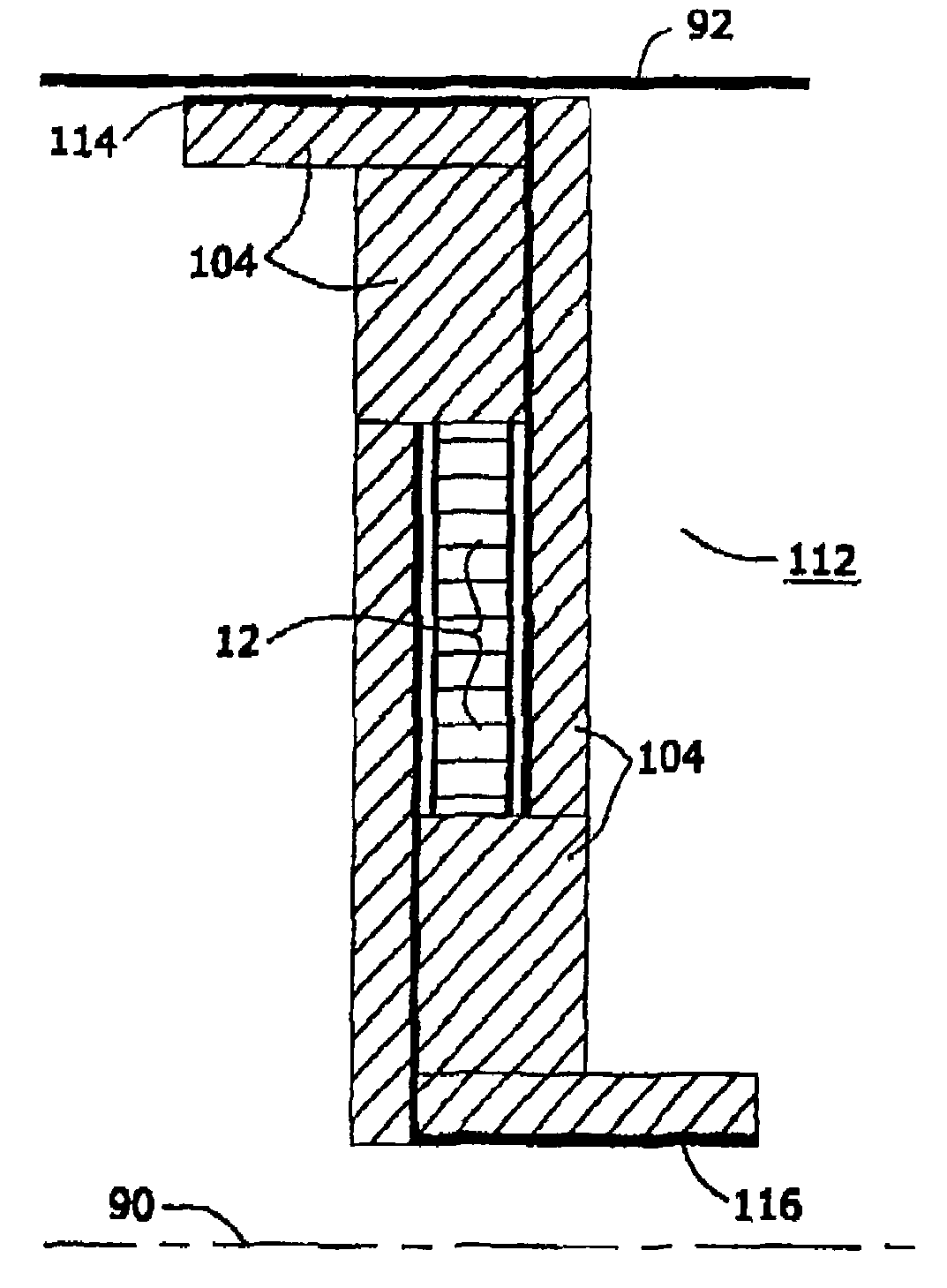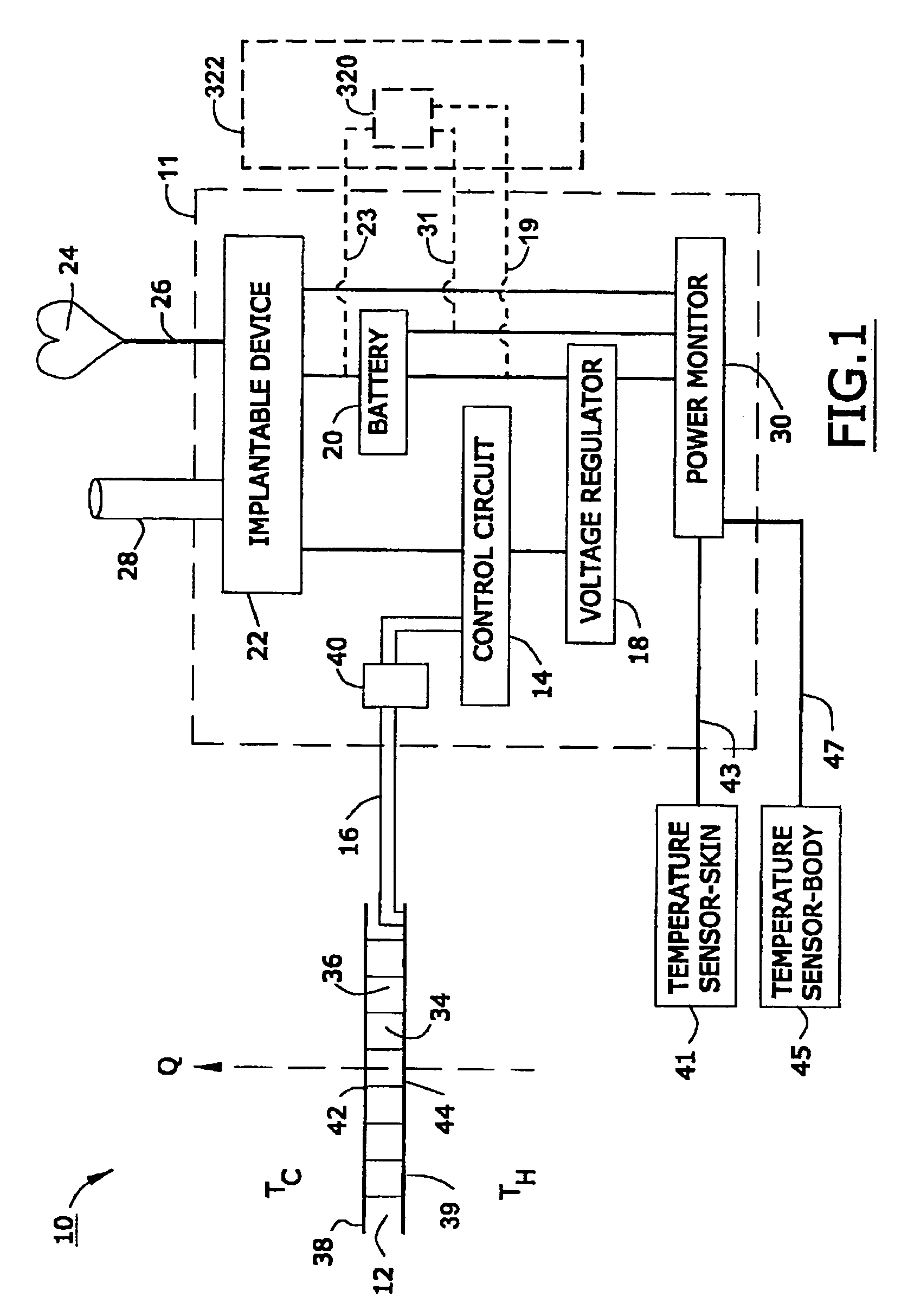Biothermal power source for implantable devices
a biothermal power source and implantable device technology, applied in secondary cells, generators/motors, therapy, etc., can solve the problems of radio-frequency rechargeable implanted devices being unable to diagnose potentially serious conditions with mri, the power source itself being used in medical electronics, etc., to increase the thermal gradient and increase the thermal gradient
- Summary
- Abstract
- Description
- Claims
- Application Information
AI Technical Summary
Benefits of technology
Problems solved by technology
Method used
Image
Examples
Embodiment Construction
[0032]FIG. 1 is a block diagram of a preferred biothermal power system 10. In the preferred embodiment depicted in FIG. 1, device 10 works on the Seebeck effect.
[0033]The Seebeck effect is the development of a voltage due to differences in temperature between two junctions of dissimilar metals. Reference may be had, e.g., to U.S. Pat. No. 5,565,763 (thermoelectric method and apparatus), U.S. Pat. No. 5,507,879 (sensor using thermoelectric materials), U.S. Pat. No. 4,019,364 (method of testing welds by using the Seebeck effect), U.S. Pat. No. 3,648,152 (Seebeck effect compensation), U.S. Pat. No. 6,207,886 (Skutterudite thermoelectric material), U.S. Pat. Nos. 6,078,183, 5,952,837, 5,869,892, 5,784,401, 5,708,371, 5,491,452 (Peltier element as series noise clamp), U.S. Pat. Nos. 5,446,437, 5,439,528 (laminated thermo element), U.S. Pat. Nos. 5,241,828, 5,073,758, 4,938,244, 4,505,427, 4,095,998 (thermoelectric voltage generator), U.S. Pat. No. 4,026,726, and the like. The entire disc...
PUM
| Property | Measurement | Unit |
|---|---|---|
| temperature | aaaaa | aaaaa |
| electrical power | aaaaa | aaaaa |
| thickness | aaaaa | aaaaa |
Abstract
Description
Claims
Application Information
 Login to View More
Login to View More - R&D
- Intellectual Property
- Life Sciences
- Materials
- Tech Scout
- Unparalleled Data Quality
- Higher Quality Content
- 60% Fewer Hallucinations
Browse by: Latest US Patents, China's latest patents, Technical Efficacy Thesaurus, Application Domain, Technology Topic, Popular Technical Reports.
© 2025 PatSnap. All rights reserved.Legal|Privacy policy|Modern Slavery Act Transparency Statement|Sitemap|About US| Contact US: help@patsnap.com



